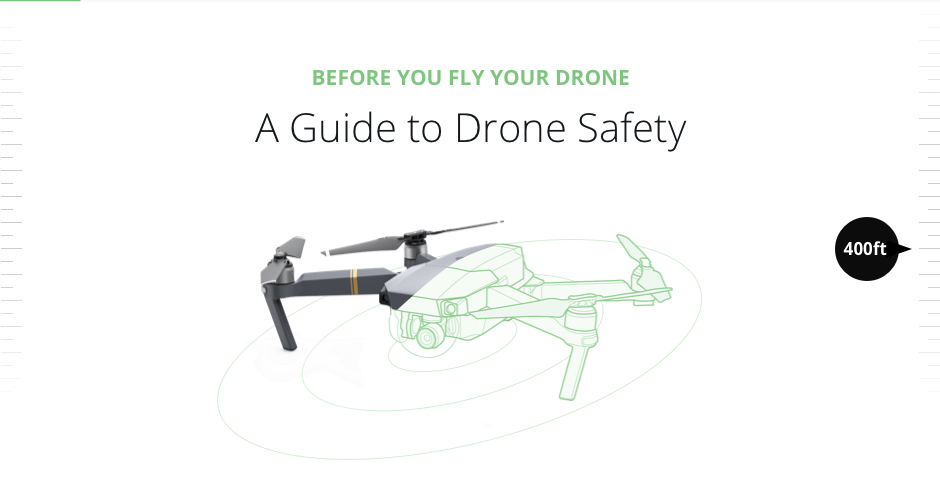
Why You Can’t Just Buy a Drone and Take to the Skies
We know them as drones. The authorities like to call them by their proper name: Unmanned Aircraft Systems or UAS. Flying civilian drones has really taken off in recent times—pun intended.
The technology and growing availability of drones caught US authorities off guard. Until recently, they had no idea how to manage them. All they knew was that drone flying could not go on unregulated.
In the meantime, folks continued to snap up drones online or from high-street stores and take to the skies. You still can, but new rules and regulations now dictate what you can fly and where [1] [2].
This guide gives you tips on how to stay safe while flying a drone. Always follow FAA rules while flying your drone and make sure that you obey local laws and regulations.
This guide will be updated on occasion with new content, images, and embedded videos. You should do your own research and stay up-to-date before flying. This document does not purport to provide you with legal advice. Always consult an attorney if you need legal advice.
Chapter 1
Safe Responsible Flying
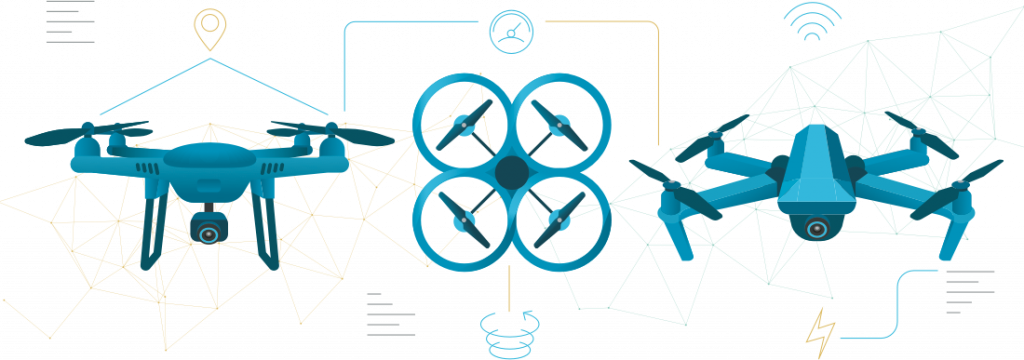
In the US, there are now tight regulations that drone owners must abide by at all times. Ignorance is no excuse in the eyes of the law. Failure to comply has serious consequences. We’ll get to those later.
Shopping for new or used drones is a simple affair. Operating them in US skies is a whole other ball game. This is why you should take a few minutes out to read this easy-to-follow guide.
There are different regulations for the three different types of drone operators:
- Recreational users
- Business users
- Public entities
The main focus of this piece is with recreational and business users. Public entities, i.e. fire services, law enforcement, government agencies, etc., will already be up to speed with their legal obligations. Public entities can fly under business drone rules if it works for them. Other departments will operate under a COA or Certificate of Authorization. The latter provides special flying privileges [3].
The Know Before You Fly Campaign
The two US organizations below are involved in the safety aspect of Unmanned Aircraft Systems.

They came together to form a public awareness program in partnership with the US Federal Aviation Administration (FAA). They call this simple educational campaign: Know Before You Fly.
The idea behind the “Know Before You Fly” campaign is straightforward. The idea is to educate drone owners and prospective owners on safe, responsible flying of UAS in US skies. We wrote this guide to support their initiative of promoting public awareness of drone safety laws.
What Every Drone Pilot Needs to Know
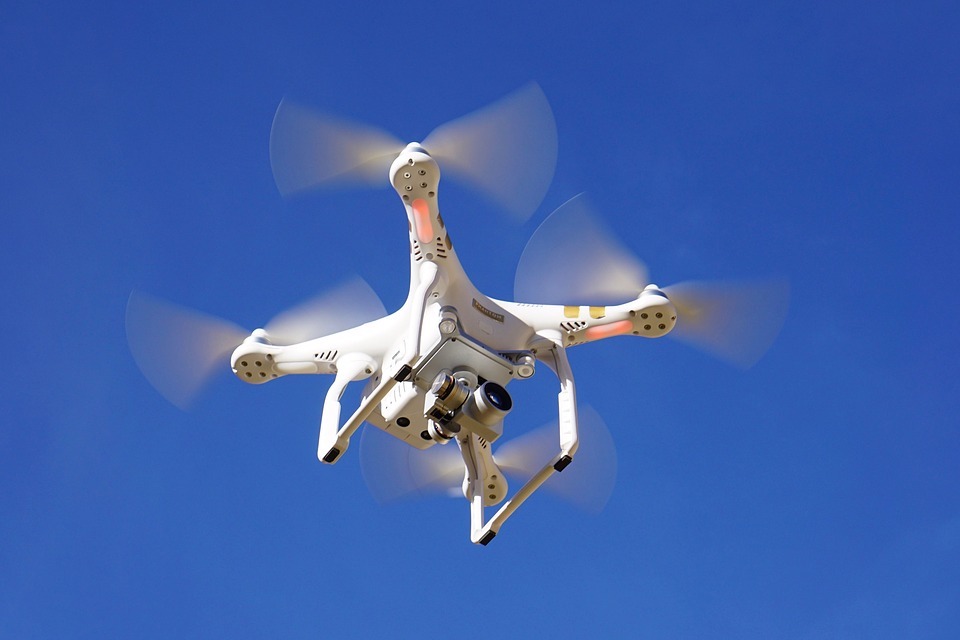 Be careful when you are flying your drone:
Be careful when you are flying your drone:
- Never fly close to any type of manned aircraft.
- Maximum flying altitude for UAS is 400 ft. above ground level (AGL). It is lower near airports.
- Your must always be able to see your drone throughout the entire flight.
- All unauthorized UAS must stay clear of fires.
- Operators must follow flight restrictions around racetracks and stadiums and for Presidential travel.
Chapter 2
Recreational Drone Operators
There are very specific rules about what constitutes a recreational drone operator. There can be serious consequences for anyone who ignores or breaks these rules now that they’re in the public domain.
The authorities class small UAS—flown for pleasure purposes—as model aircraft. This means they come under the model aircraft rules, regulations, and safety guidelines as established by the US Congress.
Any owner of a small unmanned drone or aircraft has to register with the Federal Aviation Administration (FAA). You must do this before you can legally take to the skies [4]. Once registered with the FAA, you agree with the following terms:
- You’re over 13 years of age
- You’re a U.S. citizen, a legal permanent resident, or legal visitor
- You will label your drone with your own unique registration number
- You pledge to have read and understood all the safety guidelines
- You need to take The Recreational UAS Safety Test from the FAA.
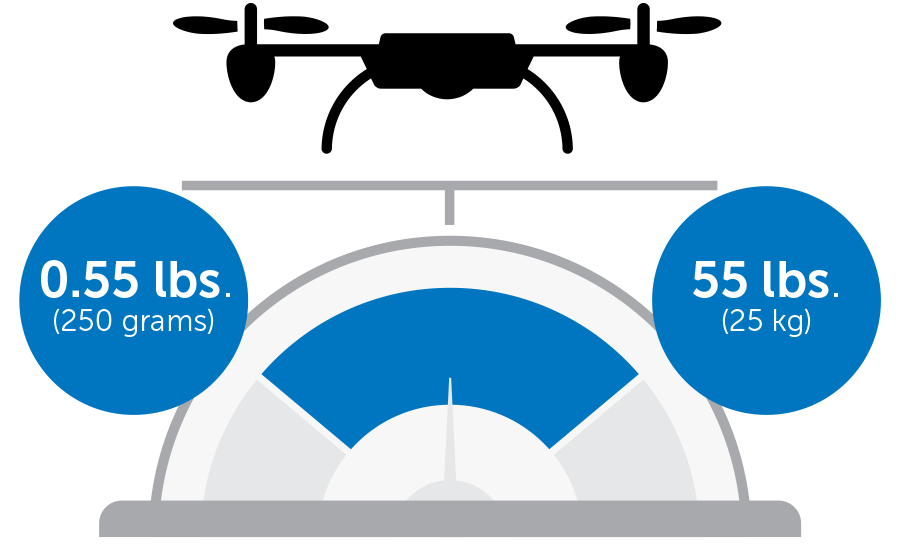
In the case of unmanned aircraft, small means any drone over 0.55 lbs. (250g). In other words, drones that are smaller than 0.55 lbs do not need to be registered when flown recreationally. Even though you don’t have to register small drones, you still must obey the FAA flight rules. We discuss these rules more below.
In addition to federal laws, there may be state and local laws that you need to obey. These laws mostly pertain to where you can takeoff and land, although there may be other regulations as well.
How to Label Your UAS
 You must affix your unique identification number to the aircraft. You can find this number after registering on the online confirmation screen of your user profile.
You must affix your unique identification number to the aircraft. You can find this number after registering on the online confirmation screen of your user profile.
Your unique identification number must be clearly visible on the outside of the aircraft. There are three ways to attach it to your drone: engraving, permanent label, or permanent marker [5].
You’re ready to take to the skies as a recreational drone pilot once you’re fully registered.
Typical recreational uses will include activities like the following:
- Take incredible photos and video for personal use
- Join a drone racing club
- Build your own drone or modify an existing one
- Others
Remember to ALWAYS adhere to your legal limitations and restrictions.
Failure to Register Your Drone
If you’re tempted to put your UAS registration on hold—think again. There can be serious consequences for those who fail to register their drone. Civil penalties can reach as much as $27,500.
Under 18 U.S.C. 3571, there are even harsher consequences for criminal penalties. These can include hefty fines to the tune of $250,000 and/or incarceration for anything up to three years.
Drone Rules for Visitors in the US
Visitors to the US can legally fly drones and other types of small unmanned aircraft under the same guidelines as nationals. That means they also have to register their UAS on arrival [6].
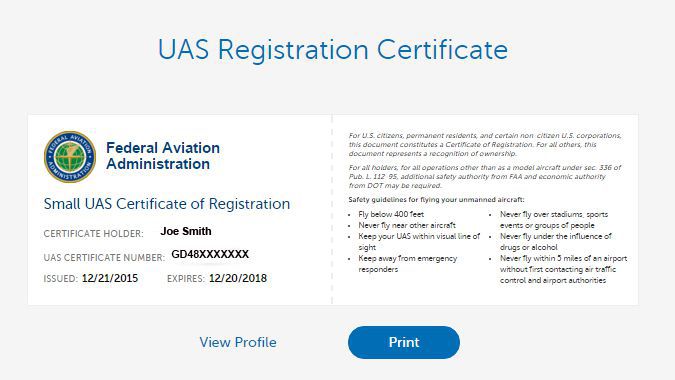
Registration for foreign nationals is the same easy online process. The registration serves as the “Certificate of Ownership“. It’s a simple yet necessary legal process.
Visitors should have the following details to hand to ensure trouble-free registration:
- Valid email address
- Current debit or credit card details
- Physical address and also a mailing address if different from the physical one
Foreign nationals need to adhere to drone laws. You must take the TRUST exam if you are flying recreationally or have your Part 107 if you are flying commercially.
Never Break These Rules When You Fly
If you’re a recreational drone operator in the US, but unsure about your entitlements, refer back to the FAA guidelines for a refresher. They clearly state what constitutes flying for fun [7].
Chapter 3
The Sky’s Not the Limit
Flying drones—like flying kites—gets more exciting the higher you go. Alas, even if your drone has the ability to climb high, recreational drones cannot legally fly above 400 ft. from ground level in the US.
Note that this is 400 ft. from above ground level (AGL), not surface level. That means you can’t launch a drone from the top of a 30 story tower block and climb 400 ft. from the launch area.
Amazon Delivery Drones and Altitude Restrictions
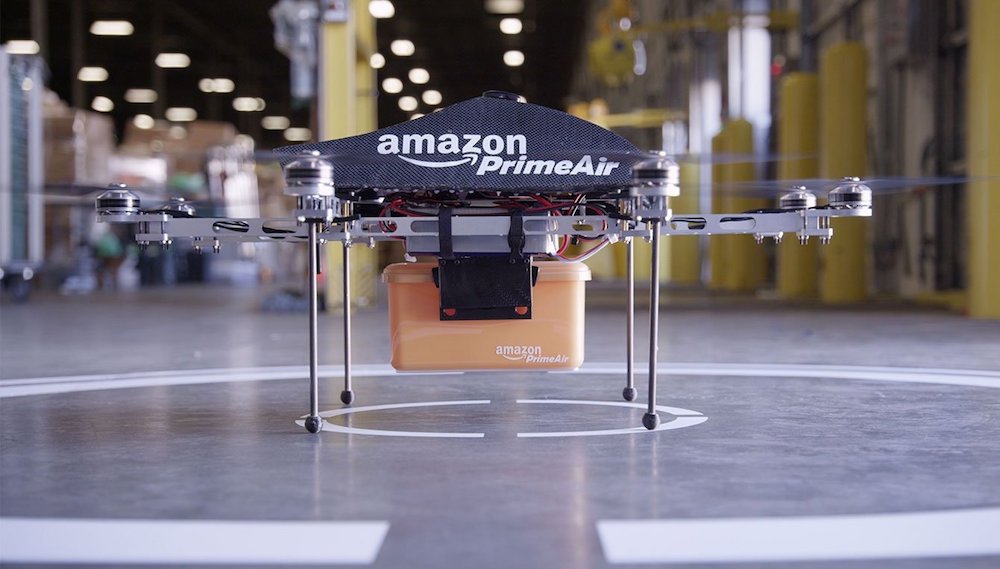 You’ve probably heard about Amazon’s FAA-approved Prime Air program. The company’s thinking about exploiting drones to deliver their products to customers. It’s a pretty neat initiative.
You’ve probably heard about Amazon’s FAA-approved Prime Air program. The company’s thinking about exploiting drones to deliver their products to customers. It’s a pretty neat initiative.
But even at the commercial level, Amazon will still have to comply with the 400 ft. altitude rule. They also have to abide by UAS speed restrictions, currently capped at 100 mph.
The vice president of Amazon’s Global Public Policy is not a happy chap. He thinks the current FAA drone regulations are too strict toward their company ambitions [8].
Hobbyist Flies Drone to 11,000 Ft.
A UAS hobbyist from Europe flew his DJI Phantom 2 drone to a record altitude of 11,000 ft. He not only broke a record he also broke the law. Don’t ever try this at home or from home turf.
Safety and security regulations for civilian drones are in place for good reasons. Failure to comply with these regulations could result in a catastrophic incident. The thrill is never worth the gamble.
For Fun or Work – Stay In the Know
People often travel with their UAS at home or overseas. Always know how the rules apply to you and your situation wherever you are and however you plan to fly [9].
You must know the answers to these questions before you take to the skies:
- Pilot requirements (if applicable)
- Aircraft requirements (if applicable)
- Location requirements
- Operating rules
Chapter 4
Flying for Business

As much fun as drone flying is, not everyone wants a UAS for recreational use. There are specific guidelines and safety regulations for flying commercial UAS that weigh less than 55lbs [10].
Flying drones for commercial use typically includes operations like:
- Aerial surveillance
- Aerial photographic services
- Real estate photography
- Building inspections, i.e. damaged roofs, chimneys, etc
The list could go on, but you get the general idea. The above examples involve flying drones for profits not for pleasure. The FAA’s ruling on commercial drones went into effect on August 29, 2016.
It’s the responsibility of all businesses and independent professionals to abide by these regulations.
What Business Drone Pilots Need to Know
Operating UAS for commercial purposes has a different set of rules and regulations than recreational flying. In the US we refer to this as flying under “the small UAS rule” (14 CFR part 107).
Here’s a rundown of pilot requirements for non-recreational drone operators:
- Pilot must be 16 years old or older (13 for recreational pilots)
- You must pass a formal aeronautical knowledge test
- The Transportation Safety Administration (TSA) vets all applicants
Because technology and demands are continually changing with UAS, rules, regulations, and commercial drone pilot prerequisites may also change. Always check with the official bodies for updates on remote pilot certification [11].
Aircraft Requirements
Commercial drone requirements are the same as recreational drones but with the addition of point 3:
- Aircraft must weigh less than 55 lbs.
- Aircraft must be registered
- Aircraft must undergo pre-flight checks to ensure it is in good condition for safe flying
Commercial UAS Operating Rules
There are some similarities with non-commercial operation rules but also a few exceptions. If you’re a remote commercial drone pilot you MUST fully understand and comply with these rules.
Commercial drone/pilot operating rules include:
- Aircraft must be in visual line-of-sight at all times
- Maximum altitude 400 feet
- Maximum flying speed cannot exceed 100 mph
- Pilot must give right of way to manned aircraft
That’s the basics covered on types of drone flying rules and regulations. There are other rules. In general, you cannot fly your drone over people or moving vehicles except under very specific conditions.
Chapter 5
Finding a Safe Place to Fly
Public safety has to come first above all else. Just because a piece of sky looks clear and empty that doesn’t always mean it’s safe to fly in that space. So how can you know the safe spaces to fly?
If you’re mobile a lot you’ll always be on the lookout for new places to fly your UAS. Those into aerial photography and video will want to know the flying conditions before they take to the skies.
There’s good news. The FAA has developed a special mobile app they call B4UFLY [12].
Meet the B4UFLY Smartphone App
 This handy little app exists to inform UAS operators of local conditions. It tells you if there are airspace restrictions for flying in the area.
This handy little app exists to inform UAS operators of local conditions. It tells you if there are airspace restrictions for flying in the area.
You can download the B4UFLY smartphone app for free at the Google Play store (Android) or at the App Store (iOS). It’s incredibly simple to use and informative. You really don’t want to be without it.
Here are some of the main features of the B4UFLY app:
- A “clear status” indicator
- Info on what drives the apps status indicator
- A Pilot Planner mode
- Clear interactive maps complete with filter options
- Direct links to FAA UAS resources and any updated regulatory information
B4UFly may not have all local laws in the app. You should check for rules yourself before taking off.
USA – the Land of Airports
Almost 70% of the US population lives within 20 miles of one of the country’s 30 major airports. In total, the US has somewhere in the neighborhood of 13,000 airports of various sizes.
There’s a good chance that most flyers of UAS live or work within a few miles of one of these airports. Some of you may not even be aware of it. This is why drone pilots need to know their skies.
Contacting the Airport
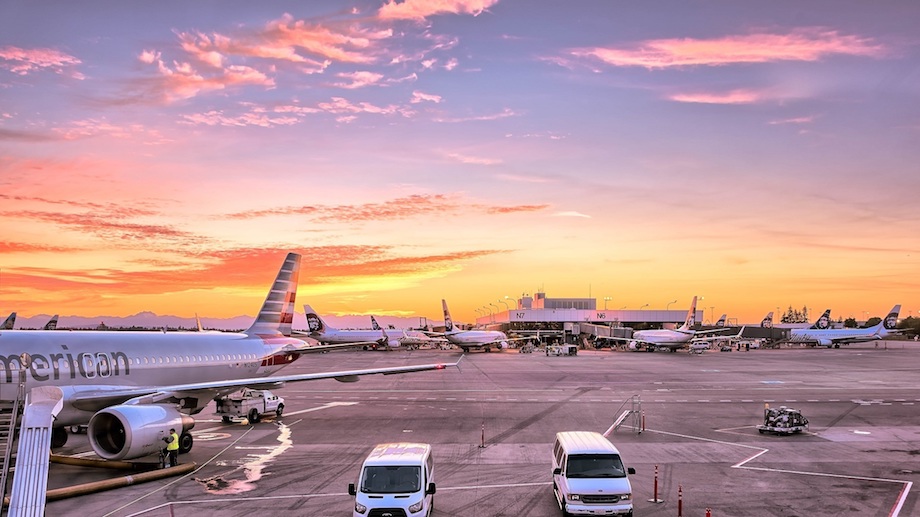
You can request permission to fly near an airport by downloading a LAANC capable app such as Aloft.ai.
Chapter 6
US Drone Accidents and Incidents
Drone pilots can—and sometimes do—have accidents as a direct result of flying their UAS. There have been several high-profile drone accidents reported in the US, over the years.
The more accidents there are, the stricter the unmanned aircraft regulations are likely to get. A lot of these incidents happened because of pilot error, ignorance, or mechanical failure.
A report from August 2015 to Jan 2016 collected 582 incidents.
The Close Encounters and Sightings table below shows areas of most incidents:
| New York / Newark | 43 |
| Los Angeles / Long Beach | 25 |
| Dallas / Addison | 18 |
| San Diego | 15 |
| Orlando | 13 |
| Houston | 11 |
| Miami | 10 |
| Philadelphia | 9 |
| Santa Ana | 9 |
| Atlanta | 8 |
| Chicago | 8 |
| Seattle | 7 |
The preliminary findings of the report look something like this:
Over 30% of all incidents were potential hazards or close encounters. Three out of every five incidents took place within five miles of airports. Nine out of ten incidents happened at over 400 ft.
Technical Incidents
Some drone accidents and near encounters are caused by pilot mistakes. Others will be the results of technical problems rather than operator error. Sometimes it will be a combination of the two.
It’s a particular problem when a drone operator loses radio connection with the aircraft. If the drone does not have an autoland feature it could end up crashing after disconnecting from the controller.
The Conclusion
Drones are here to stay. The way we use them and the advancements in technology are going to make them even more versatile, practical, and fun in the years to come.
The Federal Aviation Administration (FAA) along with the AUVSI and AMA continue to look at civilian drone safety, regulations, and safer practices. For all the latest updates visit the FFA FAQ page.
As long as you operate your UAS in accordance with rules and regulations, you can look forward to as much safe flying as you need or want to do.
Resources
- Welcome to the Drone Age
- Popularity of drones, regulations on rise
- Certificates of Waiver or Authorization (COA)
- Register aircraft between 0.55 lbs. up to 55 lbs.
- How to label your UAS
- Visitor registration or UAS
- Flying drones for fun
- Amazon: FAA Regulations too strict
- Rules for operating an unmanned aircraft
- Fly for work or business
- Becoming a remote pilot
- B4UFLY Smartphone App
- B4UFLY App tells you where you can fly a camera drone
- Best practices for flying your drone within five miles of an airport
- Analysis of new drone incident reports
Some images are from the FAA and the US Air Force
